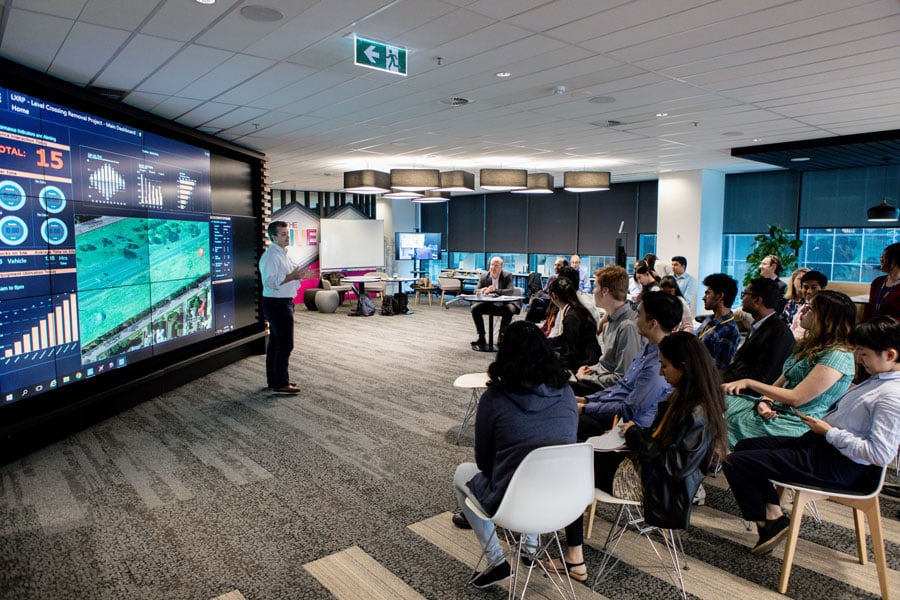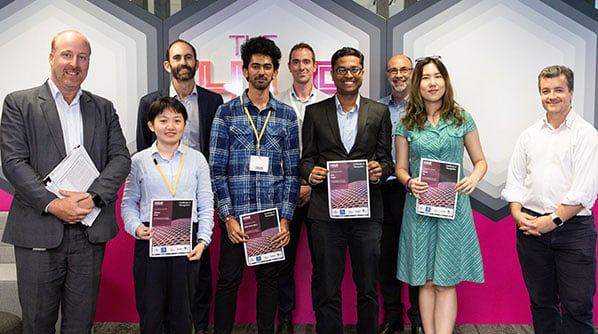2019 started productively for a cohort of Deakin Construction Management students who were among the 50 ‘Hive Champions’ assigned with the task of designing, testing, and validating new and existing ‘use cases’ for the application of IoT data in the construction environment.
A group of eight Deakin Construction Management students, led by Dr M Reza Hosseini, joined a multidisciplinary team of students from the University of Melbourne to participate in The Hive Cross Pollination Exercise organised by the Level Crossing Removal Authority (LXRA) under the aegis of The Hive Program during January and February 2019.
The Level Crossing Removal Project (LXRP) is an $18b construction program covering 75 construction sites and the largest rail infrastructure project in Victoria’s history. Central to the project is the elimination of 75 level crossings across metropolitan Melbourne by 2025. LXRP is part of the Major Transport Infrastructure Authority, and an example of the significant transport infrastructure boom in Australia, and the Level Crossing Removal Authority (LXRA) manages the program.
Being a unique technology-advanced facility, and a major real-life demonstration of the concept of the Internet of Things (IoT), the HIVE is the LXRP innovation and technology incubator program. As an attempt to integrate cyber-physical systems on a construction site, all the data generated by sensors in the connected site are visualized as a series of dashboards to assist decision making and add value to site product value for LXRA, Victoria’s Big Build and the wider construction industry in Australia. Deakin students were among the 50 ‘Hive Champions’ assigned with the task of designing, testing, and validating new and existing ‘use cases’ for the application of IoT data in the construction environment.
The students developed practical ‘use cases’ implementing IoT strategies by working in a close collaborative environment involving students from IT, architecture, civil and construction management backgrounds in a team of 4 members and received assistance from LXRP personnel who provided inputs regarding the critical challenges faced while undertaking a megaproject of this scale.
With a strict deadline of only 15 days, the students presented innovative use case scenarios using IoT data in a Construction environment to achieve deliverable outcomes and add commercial value to the LXRP mega-project. The teams were assessed based on the simplicity, comprehensiveness, practicality, and creativity of their use cases relating to asset management, safety management, environmental management, construction methodology, and process management to improve overall productivity and efficiency of the LXRP.
All the teams received a vote of appreciation and certifications from the LXRP team and the Project Director of HIVE, Mr. Matthew Bowler in particular for their valuable contributions and innovative ideas.
Read also: Researchers on a National Stage for Falling Walls Lab Australia Final
Participating students are studying Masters in Construction Management and also Double Degree in Construction Management and Architecture.











